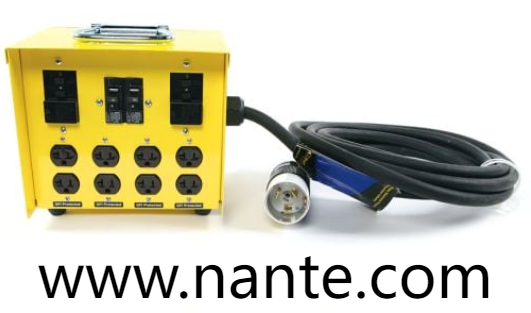When modern households and on site teams seek flexible service that supplements grid supply, a Portable Distribution Box can act as a neat hub to route incoming generation and temporary storage to multiple devices. That guarded enclosure concentrates connectors and protective devices so installers avoid a jungle of cords and can switch feeds with clearer intent. Recent chatter about resilience and emergency readiness has pushed many planners to consider how mobile hubs pair with solar arrays and battery stations.
Plugging a mobile battery unit into a distribution hub is not a casual swap. Safety comes first because a hub that accepts different sources needs clear isolation points and rated protection to prevent backfeed into networks that remain live. Users who add panels or portable generators want a unit that offers secure mating and breakers that stop faults before they travel down lines. Choosing components that match how feeds will be applied keeps handoffs between technicians smoother and reduces the chance of accidental energizing.
Weather driven interruptions and public talk about longer outage windows have made portable setups more common at community centers and temporary shelters. In those contexts a compact hub helps coordinators run several outlets from a single battery bank while keeping people away from exposed terminations. It also helps volunteers set up staged supply points without needing to rewire an area each time a new device arrives. A transportable unit that seals against moisture and dust keeps connectors cleaner between uses.
Compatibility deserves attention. Some battery stations output at standard socket volts while others need an inverter or a transfer device to feed building circuits safely. A hub that accepts a proper inlet and that has an approved means of isolating the house or site wiring from the generator side prevents unsafe parallel feeds. Installers often fit a transfer mechanism so the arrival of a mobile station does not create a dangerous loop with the mains. Clear labeling on inlet and outlet faces helps teams avoid wrong connections during busy operations.
Mobility and ergonomics matter during rapid deployments. Boxes with handles and light housings speed staging while secure latches and mounting points keep cables tidy under load. For event planners and repair crews the ability to move one unit between zones reduces downtime and keeps staging simpler. When crews need to repeat setups, a repeatable sequence for connecting and disconnecting saves time and reduces stress on connectors.
Maintenance and spare parts planning help sustain reliable service. A hub with modular internals lets technicians swap protective modules quickly rather than performing field rewires. Keeping spare breakers and labelled inlet cords in a kit reduces the time a site runs with degraded protection. Suppliers that publish variant lists and service notes make stocking straightforward and let managers plan preventive visits rather than emergency runs.
When deciding whether to tie a mobile station into a hub consider the intended use case. For light duty charging and small appliances a direct feed into a guarded box may be fine. For feeding building systems or multiple high demand loads use a device that provides isolation and coordination with site wiring. Engage a qualified installer for any connection that could interact with mains circuits so safety practices are followed and handover is documented.
If your schedule includes outdoor events disaster response staging or field repairs a portable hub can simplify logistics and improve safety by grouping outlets and protection where teams can reach them. For a selection of housings and inlet options that suit mobile battery sources visit the product listings and model notes at https://www.nante.com/ , where images and specification guidance help you match a unit to how you deploy generation and storage. The pages include installation pointers and variant suggestions so planners can prepare kits and order spare parts to fit their workflows.

